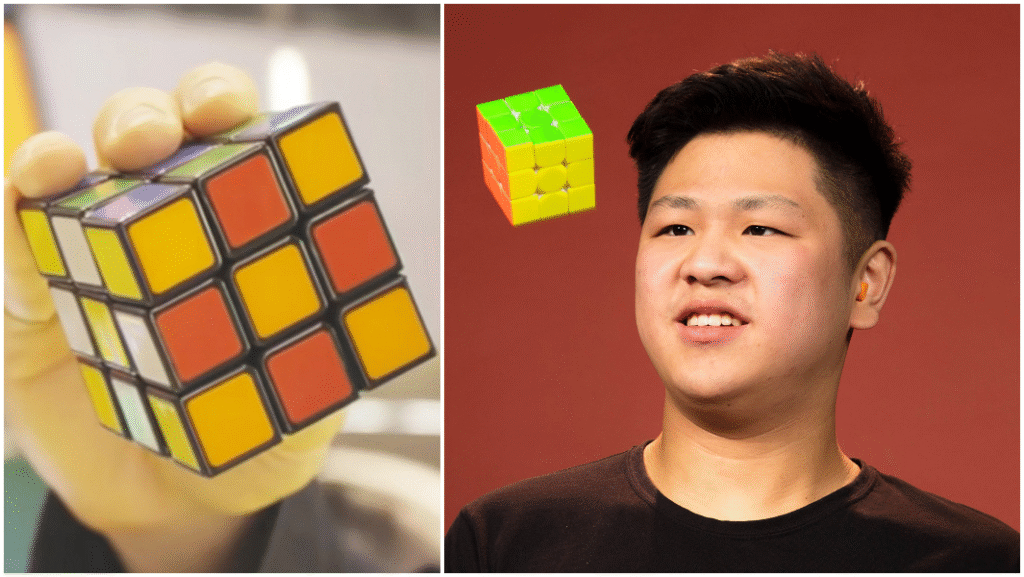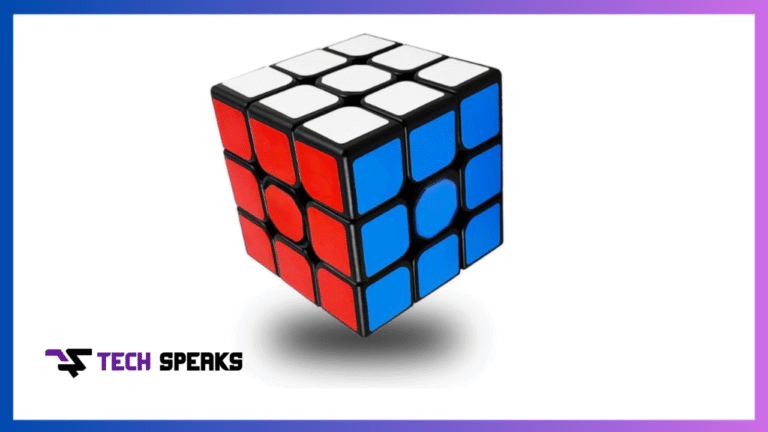Rubik’s Cubes are one of the most iconic puzzles in the world. But have you ever wondered just how many people can actually solve one? From kids and teenagers to adults and even seniors, millions have tried to crack the colorful cube. In this article, we’ll explore the world of Rubik’s Cubes in detail. Whether you’re new to it or just curious, you’ll discover why this small cube has a big place in people’s hearts—and minds.
What Is a Rubik’s Cube and Why Is It So Popular?
The Rubik’s Cube is a 3x3x3 puzzle cube that features six sides, each made up of nine small colored squares. When solved, each side of the cube shows a single solid color. But the real fun begins when the colors are all mixed up—and the challenge is to return the cube to its original state by twisting and turning it in all directions.
Invented in 1974 by Hungarian architect Ernő Rubik, the cube wasn’t originally designed as a toy. It was created to help students understand 3D geometry. However, when it was introduced to the world as a puzzle, it quickly became a sensation. In the 1980s, it exploded in popularity and has remained a cultural icon ever since. Over 450 million cubes have been sold globally, and it has inspired everything from competitions to world records, to online tutorials with millions of views.
One reason the Rubik’s Cube remains so popular is that it’s simple in design but incredibly complex in function. Solving it is a mix of logic, memory, and dexterity, which makes it appealing to people of all ages. You can take it anywhere, solve it over and over again, and even learn advanced techniques as your skills grow.
How Many People Can Solve a Rubik’s Cube?
Now to the big question: how many people can actually solve a Rubik’s Cube? According to various estimates and surveys, it’s believed that around 6% to 8% of the global population can solve a Rubik’s Cube without help. That may not sound like much, but when you do the math, it’s pretty impressive. If we take just the population of the United States (around 330 million people), that would mean about 20 to 26 million Americans can solve a Rubik’s Cube.
Globally, with a population of over 8 billion, that puts the number of cube solvers at more than 500 million people. But it’s worth noting that this includes people who may have learned to solve it once or twice but don’t necessarily do it regularly. Still, that’s a lot of cube-solving power!
And every year, that number grows. Thanks to YouTube tutorials, mobile apps, online cube simulators, and school programs, more people are learning to solve the Rubik’s Cube every day. Even kids as young as 7 or 8 years old are mastering the cube faster than ever.
Is Solving a Rubik’s Cube Really That Hard?
To someone who’s never solved it before, a Rubik’s Cube might look impossible. All those colors, all those tiny squares—how does anyone figure it out? But the truth is, solving a Rubik’s Cube is not as hard as it looks, especially if you use the right method.

Most people struggle in the beginning because they don’t realize there’s a step-by-step solution. You don’t have to be a genius to solve the cube—you just need to learn a few simple algorithms (which are like little formulas for moving pieces in the right place). Once you understand the basic method, it becomes more about memory and practice than anything else.
Let’s break this down further.
Why Do People Struggle with It at First?
Many people try to solve a Rubik’s Cube by just turning the sides randomly. But that rarely works. Without a strategy, it’s nearly impossible to solve. The cube has over 43 quintillion possible combinations, so just twisting randomly can keep you stuck forever. This is why most beginners give up before even making it through the first layer.
Another reason people struggle is that the cube can seem intimidating. With all the hype and world records, some assume it’s only for “smart” people or math experts. But that’s just not true. With the right guidance, even young kids can master it.
What’s the Secret to Solving It?
The real secret is learning one of the beginner methods—most often the layer-by-layer (LBL) method. This approach teaches you to solve the cube in three main parts: first the white cross and white layer, then the middle layer, and finally the yellow layer. With this method, you only need to remember about 7 basic algorithms. You don’t even need to know why they work at first—just how to apply them.
Once you practice enough, your hands begin to remember the moves, and you get faster without even trying. Many beginners go from taking hours to solving it in under a minute within a few weeks of practice.
Can a 10-Year-Old Learn It Too?
Absolutely. In fact, thousands of 10-year-olds (and even younger!) solve Rubik’s Cubes every day. Schools often include it as a classroom activity to boost critical thinking, hand-eye coordination, and memory. There are YouTube channels run by kids under 12 that teach others how to solve the cube. With a little patience and practice, any child can learn it. Many even become speedcubers by the time they’re in middle school!
How Fast Can People Solve a Rubik’s Cube?
Once someone learns how to solve the cube, their next question is usually: “How fast can I get?” That’s where things get really fun. The average person who has learned the beginner’s method can usually solve the cube in 2 to 5 minutes after a few weeks of practice. With more training and exposure to advanced methods like CFOP (Fridrich Method), solving times can drop to under 30 seconds.
But then there are speedcubers—people who specialize in solving the cube as fast as possible. These are the athletes of the cubing world. They train for hours, perfecting finger tricks, algorithms, and solving techniques.
The fastest solves happen in competitions governed by the World Cube Association (WCA). These speedcubers can regularly solve a Rubik’s Cube in under 10 seconds, and the world’s best can do it in under 4 seconds.
How Many People Solve a Rubik’s Cube Every Year?
It’s hard to track exactly how many new people solve a Rubik’s Cube each year, but we can look at some solid numbers to get an idea. Based on toy sales, online data, and community statistics, experts estimate that at least 10 million people learn to solve a Rubik’s Cube each year.
In the United States alone, Rubik’s Cube sales exceed 5 million units annually. Many of these are bought by first-time users, often kids or teens learning to solve it for the first time. YouTube videos like “How to Solve a Rubik’s Cube in 10 Minutes” get millions of views each year, showing how widespread the interest is.
Cubing has also become more social, with clubs in schools, universities, and online groups sharing tutorials and holding friendly competitions. This makes it easier than ever for new solvers to learn and improve.
What Makes Someone a Speedcuber?
A speedcuber is someone who doesn’t just solve the cube—they aim to solve it as fast as humanly possible. Speedcubing is a sport, and like all sports, it has techniques, strategies, and even specialized gear.

Speedcubers don’t just learn the beginner method. They dive deep into advanced algorithms, memorizing over 100+ sequences that help solve the cube faster. They also learn finger tricks to move the cube quickly with minimal effort. Many practice with timer apps or official WCA timers to measure their progress.
Who Holds the Current World Record?
As of 2025, the world record for solving a standard 3×3 Rubik’s Cube in a single attempt is 3.13 seconds, held by Max Park, an American speedcuber. He’s one of the most well-known figures in the community and has several world records in other cube types too.
Max Park has also been featured in documentaries and has inspired thousands of new cubers to join the sport. His story shows that with dedication and focus, anyone can excel in speedcubing.
Do Speedcubers Use Special Cubes?
Yes, they do! While the original Rubik’s Cube is great for beginners, speedcubers use high-performance cubes that are designed for speed, smoothness, and control. These cubes have magnetic pieces, adjustable tension, and lubrication that allow for faster movement without jamming.
Some popular speedcube brands include GAN, MoYu, QiYi, and YJ. These cubes are lightweight, durable, and optimized for competitions. If you’re serious about getting faster, investing in one of these can make a big difference.
Can Everyone Learn to Solve It?
Yes! Anyone, regardless of age or skill level, can learn to solve a Rubik’s Cube. All it takes is interest, patience, and practice. With step-by-step tutorials available online, plus beginner-friendly cubes and apps, the barrier to entry is lower than ever.
Some people learn in a day, others take a week—but the point is, it’s completely possible. Whether you’re a 10-year-old student or a 60-year-old grandparent, the cube doesn’t discriminate. In fact, solving it can improve memory, boost concentration, and increase problem-solving skills.
Why Do People Love Solving Rubik’s Cubes?
There’s something incredibly satisfying about solving a Rubik’s Cube. That “click” when the final layer falls into place is like solving a mini-mystery. But beyond that, people love the cube because it’s challenging, rewarding, and portable. You can take it anywhere, solve it in your free time, and always have a new goal to chase—like beating your best time.
For many, it’s also a mental workout. Solving the cube engages your brain in ways that feel productive and fun. It’s like playing chess with your fingers. Plus, it’s a great conversation starter and hobby that connects people from all over the world.
The Bottom Line
So, how many people can solve a Rubik’s Cube? Millions—and growing by the day! It’s not just a toy or a puzzle; it’s a global phenomenon that challenges our minds, inspires creativity, and brings people together. Whether you’re trying to solve it for the first time or aiming for a world record, the Rubik’s Cube has a place for everyone.
If you’re curious, go grab a cube, watch a tutorial, and give it a try. Who knows? You might be the next person to join the millions who can say, “Yes, I solved it!”

